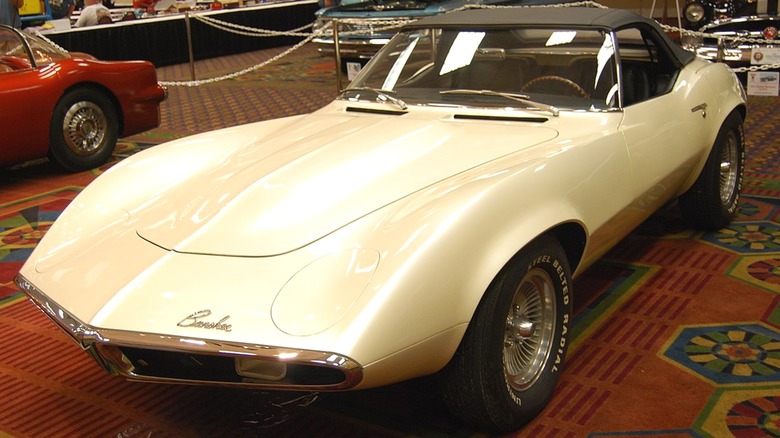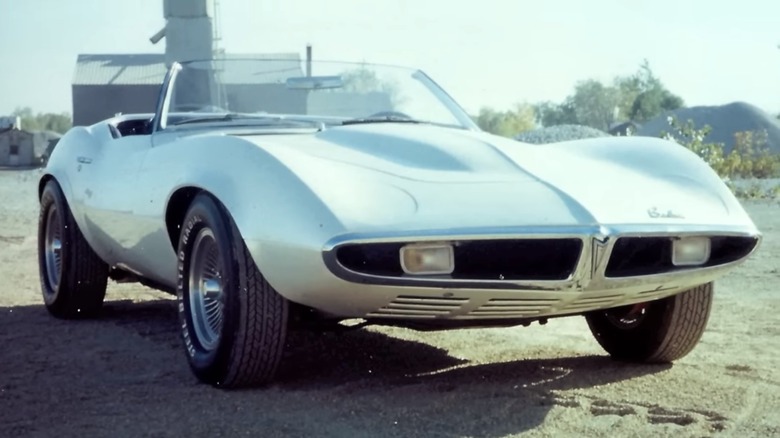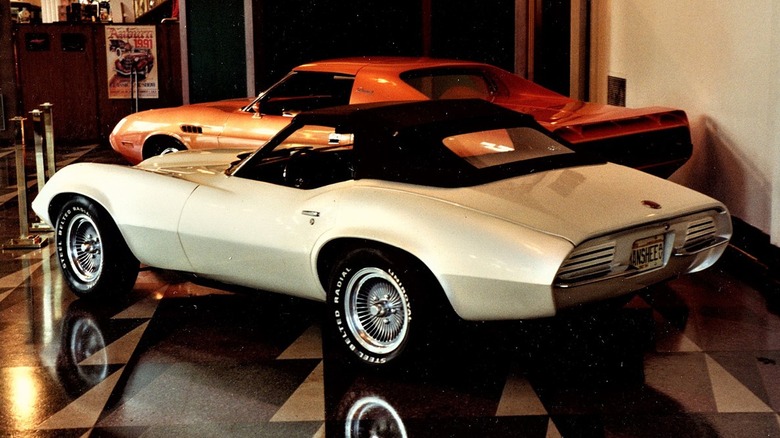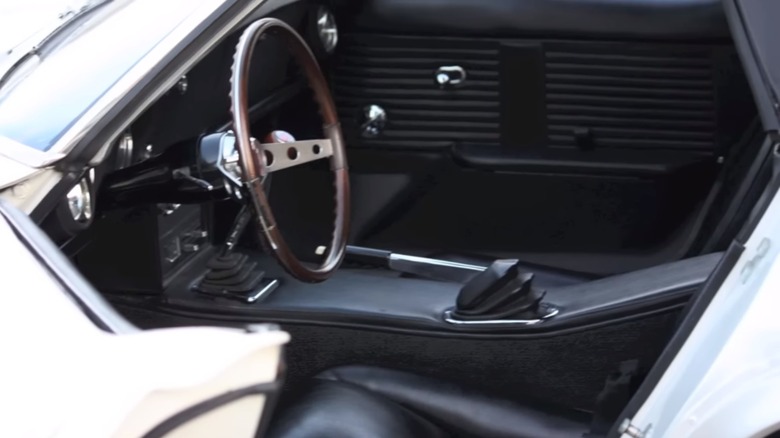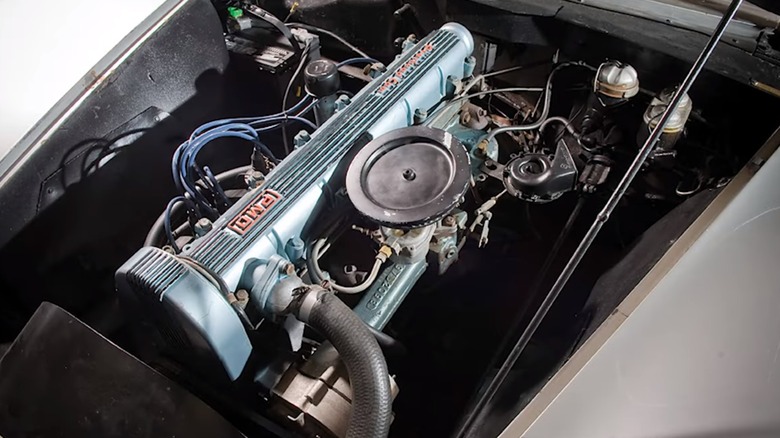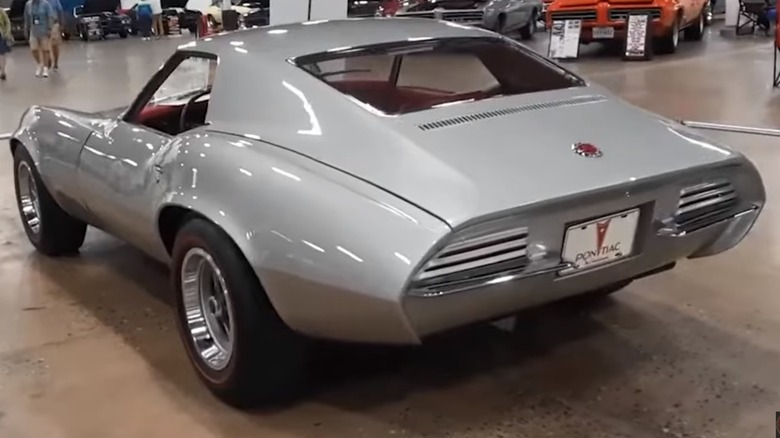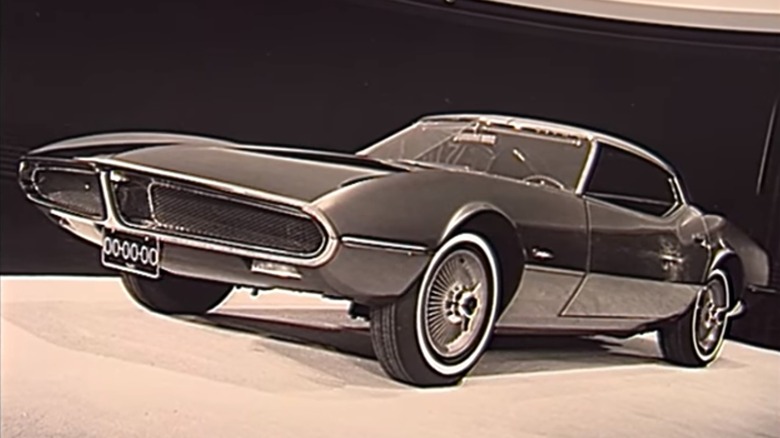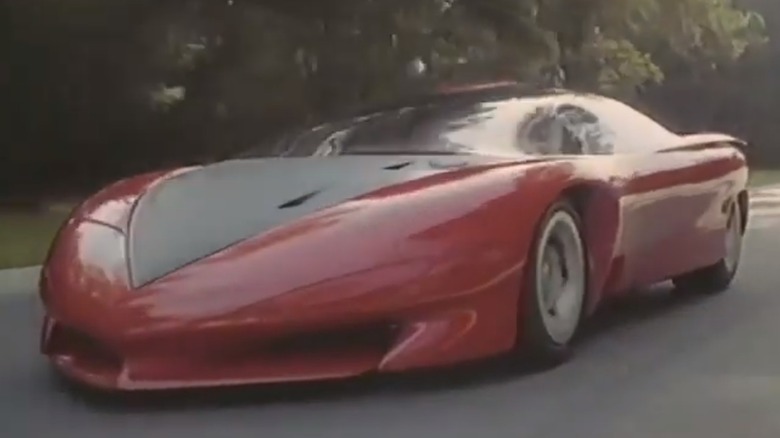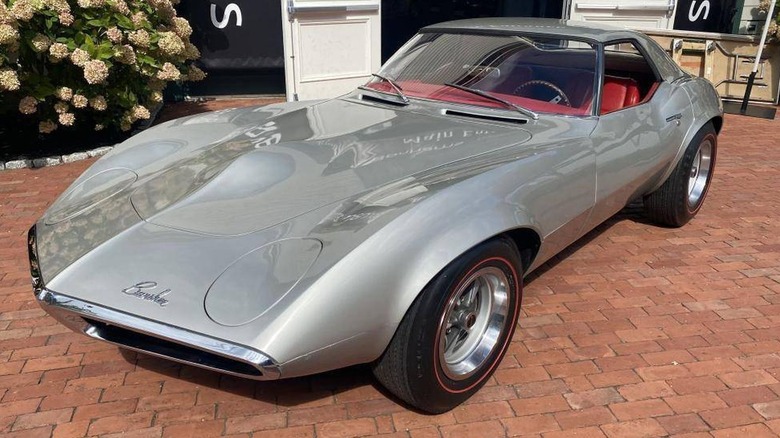Everything To Know About The Pontiac Banshee, And What Made It So Unique
The Pontiac Motor Division of General Motors (GM) gave us plenty of fun and attractive cars over its near-century of existence. The brand was known for having sporty and high-performing cars that served as stylish alternatives to Chevrolet models, and it was a key player in the muscle car era. Furthermore, Pontiac gave us many examples of beautiful and desirable concept cars that many drivers would have loved to park in their own garage. While several Pontiac concepts demonstrated well-developed skills of styling and design, perhaps none of them rose to the heights of the illustrious XP-833 Banshee of 1964, nor do they come with such a contentious background story.
Concept cars serve to give designers the opportunity to flex their creative muscles and develop something eye-catching and innovative to pique the public's interest. While just about every manufacturer makes them, Pontiac was adept at creating concepts and prototypes to whet the appetite of consumers and turn heads while on the auto show circuit. The earliest example of a concept from Pontiac, a 1940 sedan made with a clear plexiglass body, may have been an interesting car, but the later 1964 XP-833 Pontiac Banshee concept demonstrated the prowess of the brand's design team and what it could do if left to its own devices. Sadly, it never made it into production, but today we can still appreciate it for everything that made it so unique.
[Featured image by artistmac via Wikimedia Commons | Cropped and scaled | CC BY 2.0]
Origins of the Pontiac XP-883 Banshee
While John DeLorean is well-known today for his association with automotive manufacturing, particularly due to his failed eponymous production car made famous in the movie "Back To the Future," he was an upstart engineer at Pontiac in the late '50s. He soon became chief engineer, creating the popular Tempest in 1959 and the iconic GTO in 1964. But DeLorean was a trailblazer never content with the status quo, which is why in 1963 he ordered the production of two prototypes that would compete directly with the Corvette, defying corporate directives against such models.
The two prototypes would be a convertible and a hardtop roadster. DeLorean knew that they would be rejected by management but pressed on with the project anyways. Ready for the rejection, he even developed a binder to present with the project outlining his proposal and why his new car should exist in the market. He wanted to pitch it as a competitor to the new Ford Mustang, even though that car had seating for two more.
Even though the board had no intention of building this car when it was first presented, it allowed DeLorean the opportunity to pitch it because of his talent and drive. After all, in 1965, the board appointed him as head of the Pontiac Motor Division, and at just 40 years of age, he was the youngest ever head of a GM brand. Odds were that he'd later pitch another project they would endorse (he did).
A blueprint for success
While technological improvements in the auto industry were racing forward at a feverish pace, the Banshee capitalized on a formula that had already been working for years. Making the car as light as possible and using the most powerful engine available was a sure way to make an exciting machine.
The Corvette had been the GM halo car and performance champion beloved not only by the top brass, but by the general public as well. Therefore, the Banshee needed to shy away from it by being a bit more modest and much less expensive, intending to woo the younger drivers that the Mustang was after. Furthermore, although DeLorean wanted it to have huge power output, anything that could overtake the Corvette would automatically be verboten, so a tamer car could be presented, even though its chances were nil from the start.
[Featured image by Alden Jewell via Wikimedia Commons | Cropped and scaled | CC BY 2.0]
Inventive engineering and alluring styling
While at first glance the Banshee looks as though it is based on the Corvette, it isn't. Unlike the traditional body-on-frame chassis covered with a fiberglass body of the 'Vette, the Banshee sat on a unique steel perimeter frame chassis, with steel floor pans welded to it and a fiberglass body bolted to the top in a sort of blended unibody structure. Much of the work hidden beneath the upholstery looked crude, showing welded seams throughout, but this was a hand-built prototype — a production car would have parts with a more finished appearance.
Keeping with the aim of creating an affordable sports car, the majority of the parts used came right off the shelf from GM warehouses, and many were shared with the Corvair and Tempest. However, the body was a bespoke fiberglass creation influenced by the flamboyant 1963 Corvair Monza GT show car designed by Larry Shinoda, whose later work would include the incredible Ford Mustang Boss 429.
The fiberglass body made for one of the most attractive examples of industrial design of the period. Its svelte silhouette and flowing curves were sporty and appealing, while the pop-up headlights and slotted tail lights provided the icing on this mechanical cake. It might look like a Corvette to readers nowadays, but remember that the C3 Corvette came out in 1968, five years after the Banshee was created.
Power options slated for the Banshee XP-833
Ever since Chevrolet replaced the Blue Flame straight-six with a V8, the Corvette has been all about big power and speed. While the Banshee's design and styling could have made a perfect little speed demon, its plans were to include a new Pontiac six-cylinder and a more modest V8.
Options initially slated for the Banshee included a new Pontiac overhead cam 230 cubic inch straight-six, or a 326 V8. The six-cylinder used a single overhead belt-driven cam with a cross-flow cylinder head, a novel setup for American automakers at the time, that could put out 215 horsepower with a four-barrel carburetor sporting the Pontiac "Spirit" tuning. To keep things modest for the prototype, the engine used in the car was limited to just 155 horsepower. A second car was built with a V8. This one used a standard Pontiac 326 with 250 horsepower, and both engines were mated to a four-speed transmission as sports cars were meant to have back then.
Plans that went into the project included the eventual offering of a long list of options, although some details were left out of its presentation to management to maintain an air of modesty concerning the concept. According to Hot Rod Magazine, former Pontiac engineer Bill Collins said he and DeLorean wanted to make a version of the car with the monstrously powerful 421 V8, but they knew that would have to be introduced much later, if the car were produced at all.
Killed by corporate cold water
Collins and DeLorean knew their roadster project would be an uphill battle from the start. It was no secret that the Corvette was not to be messed with and that each division within GM was meant to stay in its own lane. Regardless of any potential roadblocks ahead, DeLorean approved the funding for the project and remained intimately involved the whole way through.
The XP-833 program went forward with those directing it keenly aware of what they were doing and what they were up against. Being brash and unapologetic, DeLorean foisted his concept on upper management attempting to brute force its way into production. Although he introduced it to GM president Ed Cole in 1964 with a cool reception, he managed to arrange a meeting with the board to introduce his two prototypes in 1965.
The reaction from the board was predictable. With two cars in near production-ready form, funding was immediately pulled and the project abruptly halted. While no minutes from the meeting exist, it's hard to imagine the board was unimpressed by the project — a clay model Banshee was sent with the Mako Shark II concept to Chevy for development of the C3 Corvette. Collins assumed internal competition with the Corvette was a major factor in the killing of the Banshee.
Banshee successors
There are other concepts bearing the Banshee name built both in the era of the XP-833 and after. However, information about them is scarce and determining what is legitimate and what is internet fluff is difficult.
To find what appears to be credible information regarding successive Banshee concepts requires looking to the French-Canadian section of the web. According to Le Guide De L'Auto, DeLorean launched a study of sports cars that could be made in two- or four-seat models concurrently with the XP-833, with the first of them designated XP-798. It was presented as the Banshee at the 1966 New York Auto show featuring a Tri-Power 421 V8 and wild design features but had been ordered off the stage by GM Chairman James Roche, only to be ordered back on by DeLorean. Hot Rod reported that this led to Roche and DeLorean engaging in a heated argument, which resulted in the car being sent away to be hidden in a warehouse, until it was crushed many years later.
Another concept car called Banshee II was created in 1968 but even less information is available about it beyond some articles about the XP-833 and some pictures claiming to be the Banshee II posted on a Russian car website. Other websites present an information ouroboros beginning and ending at Wikipedia. Hot Rod acknowledges that this was indeed a show car based off of the Firebird 400, but only existed as a design exercise.
The final Banshees
Pontiac again brought the Banshee name to a concept car in 1974. Like its predecessor, information about this model is scarce. It definitely existed, appearing to be a heavily modified second-gen Trans Am with gullwing doors and an elongated nose and tail, with highly stylized headlights and tail lights. Its current status is difficult to determine, but as of 2008, a Hemmings article displaying photos from the GM Heritage Center shows it parked next to a 1977 Type K Trans Am.
Pontiac's final Banshee came in 1988 with the Banshee IV concept. While the original XP-883 was a stunning and sleek sports coupe, the Banshee IV was a wild and exotic supercar. With a quad-cam 4.0-liter V8 nestled between the occupants and the rear wheels, it followed the formula established by the Italian exotics in the decade before, though its paltry 210 hp wouldn't measure up to a contemporary Countach. Regardless, it was a showcase of Pontiac design, full of futuristic elements and cutting edge accessories such as a G-meter and primitive navigation display, meant only to build interest in the brand. Many of the design elements can be seen in later models, such as the fourth-generation Firebird released in 1993, as well as the interiors of many Pontiac cars released in the '90s.
Legacy and current state
While the original XP-833 Banshee remains an icon of 1960s automotive styling and a testament of the will and tenacity of John DeLorean, it represents something else regarding GM. This sleek and attractive car may very well have been a decent selling car, attracting young buyers to Pontiac showrooms who may have otherwise wandered into a Ford dealership to look at the Mustang. But the Banshee never got the chance to attract those buyers because the top brass at GM feared doing anything that might touch their golden child, the Corvette.
Benjamin Hunting of The Drive argues that this pervasive attitude hampered Pontiac for years, preventing the division from ever truly breaking out with something exciting and original, which is ironic considering its long-time slogan of "We Build Excitement." It's easy to see the logic behind his assertion. This lack of independence and freedom of creativity compounded over the years likely contributed to its eventual closure in 2010.
Though Pontiac is long gone, the XP-883 Banshee remains today. As of the time of writing, one of the two examples built is listed for sale on Hemmings, with an asking price of $1 million. It is a six-cylinder hardtop that was saved from the crusher and kept in pristine condition with only 1,500 miles on the odometer. While it is surely destined to end up in a museum, it would be a thrilling experience to take for a Sunday drive if only just once.
